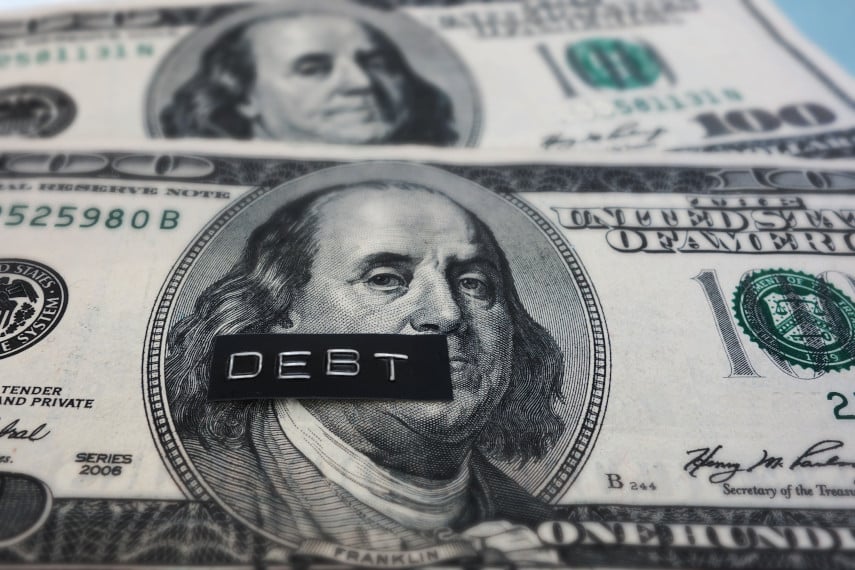A recent survey has shown that baby boomer investors have far less money saved up in their defined contribution plans than they should. That survey of investors found that baby boomers averaged around $263,000 in savings in their employee-sponsored plans (e.g. 401(k) plans), versus the $658,000 that they would need in those plans in order to retire safely. And while those ages 65 to 74 averaged around $300,000 in those plans, that’s still well less than 50% of what they should have.
For someone retiring at age 65, it would take about $1,800 per year in contributions for 40 years at a 6% annual rate of return to get to $300,000, or $3,600 per year for 30 years. That’s $5-10 a day in contributions to a retirement account at a very conservative growth rate. Given the actual growth rates over the past several decades, this means that baby boomers either have very poor saving habits or they were significantly affected by the financial crisis, or perhaps a little bit of both. The 2008 crisis hurt many retirement plans, forcing those close to retirement to minimize retirement contributions or borrow from retirement accounts in order to satisfy current expenses, as well as cutting down on the number of good investment options.
That’s also reflected in baby boomers’ asset allocation, which the survey showed were 30% invested in cash. Cash is one of the worst investments possible. Holding a small amount of cash might make sense if you need immediate liquidity, but for retirement purposes it is completely counterproductive. Because central banks pursue inflationary monetary policies, cash holdings are essentially guaranteed to lose money over time. A few years ago Germany’s Bundesbank explained that real returns on bank savings accounts were historically negative, meaning that savers who relied on holding cash lost money over the years.
So now that we know that many baby boomers aren’t in great financial shape, what lessons can be learned from their mistakes to make sure that future generations don’t end up in the same situation?
1. Start Saving Early
The power of compounding interest is incredible, but it’s ignored by too many people. Let’s say you’re able to save $10,000 a year. If you save for 40 years, assuming a 6% annual return you’ll have $1.64 million stashed away. But if you put off saving for the first five years of your career and only save for 35 years, you’ll only have about $1.18 million saved up. That’s almost 30% less just because you dallied for five years.
Even if you’re only able to save $5,000 per year, if you can save for 40 years you’ll still end up with $820,000, nearly 70% of the savings of the person saving twice as much who only saved for 35 years. Someone who starts working after high school who might be able to save for 45 years will have 95% as much money saved up as the person saving twice as much per year who only saved for 35 years.
And 6% is a relatively conservative estimate, historically speaking, over the course of 40 years. As the average rate of return increases, those numbers benefit those who saved earlier much more. At an 8% rate of return, the person saving $5,000 for 45 years has 12% more money at retirement than the person who saved twice as much per year for only 35 years. At a 10% rate of return the 45-year saver has 33% more money. The moral of the story is: make those early years count.
For those who may already be near retirement age, it’s not too late. There are catch-up contributions that you can make towards a 401(k) or IRA if you’re over 50 years old. Since your retirement may very well last 30 years or more, making those contributions today can ensure that those funds are making good gains now and still working for you when you’re well into old age.
2. Put Away As Much As You Can Afford
It’s tempting to want to live the good life while you’re young. Everyone wants a big house, a nice car, and good food. But living too extravagantly while you’re young detracts from your ability to save, taking money away from your older self. It’s far better to save more now so that you can enjoy life once you’re no longer earning a salary.
Even little purchases can add up over time. Ask yourself if you really need that $5 coffee every morning. At a 6% annual rate of return, that coffee is costing you $50 from your retirement funds; at 8% it’s costing you over $100; at 10% it’s over $200. Buy that coffee every day and you could cost yourself dearly in retirement.
3. If You Have A 401(k), Max It Out
Far too many people fail to take advantage of their employer-sponsored retirement plans. If your employer offers a 401(k), and especially if they offer matching contributions, try to max out your contributions. Matching contributions are free money. Even if stock markets decline, you’ve still come out ahead. And once you’ve vested, that money is yours to take with you if you ever change jobs or want to roll over those funds into another retirement account. If you put $200 a month into a 401(k) and your employer matches, you’re up to nearly $5,000 a year. And because that money comes out of pre-tax dollars before you see your paycheck, you’ll never even realize it’s missing, even though you’re building up a nice little nest egg.
4. Diversify Your Portfolio
Don’t put all your eggs in one basket. Stocks, bonds, and mutual funds all have their place in an investment portfolio, but at the end of the day they are all dependent on the health of Wall Street. If financial markets crash, so will your retirement portfolio. Alternative investment assets such as real estate, commodities, precious metals, etc. can provide some much-needed diversity to your retirement account. You obviously want to do your due diligence and evaluate all the risks before investing in those areas, but a little bit of diversification can help ensure that your portfolio isn’t completely exposed to the booms and busts of stock markets.
5. Invest In Precious Metals
One of the easiest ways to diversify a portfolio and protect your retirement savings is through investing in precious metals like gold and silver. They’re not complicated investments and anyone can follow their prices online or in the newspaper. Gold and silver have served as stores of wealth for millions of investors over the centuries, and will continue to do so well into the future.
Many financial writers like to downplay gold as an investment, not realizing that it’s had an annualized return of about 7.6% since President Nixon closed the gold window in 1971. If you had invested $10,000 in gold in 1971 (equivalent to about $50,000 in current dollars) and not touched it at all until today, it would be worth nearly $300,000. That’s not a bad return on investment.
Obviously you don’t want to invest your entire portfolio in gold because that defeats the purpose of diversification, but investing a decent chunk of your retirement savings can provide a good hedge against inflation and protect your savings from losing value in the event of a market crash.
With a gold IRA, investing in gold is easier than ever. You can benefit from owning gold and silver while still receiving the same tax advantages that conventional IRAs enjoy. But as with any investing, time is of the essence. The earlier you start investing, the better off you will be in the future. Don’t wait any longer than you have to in order to secure your retirement.





